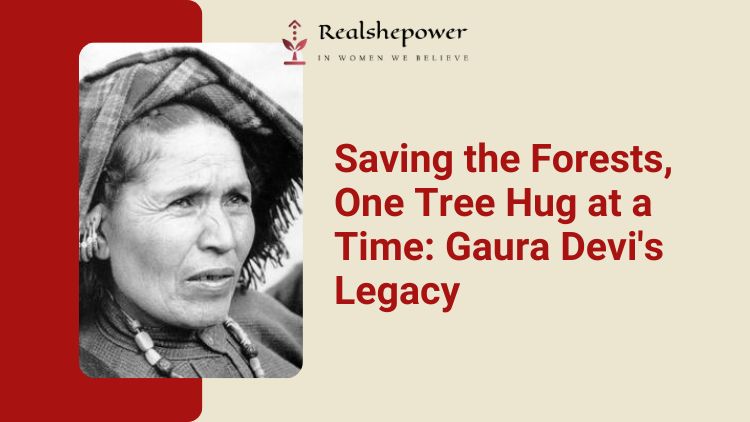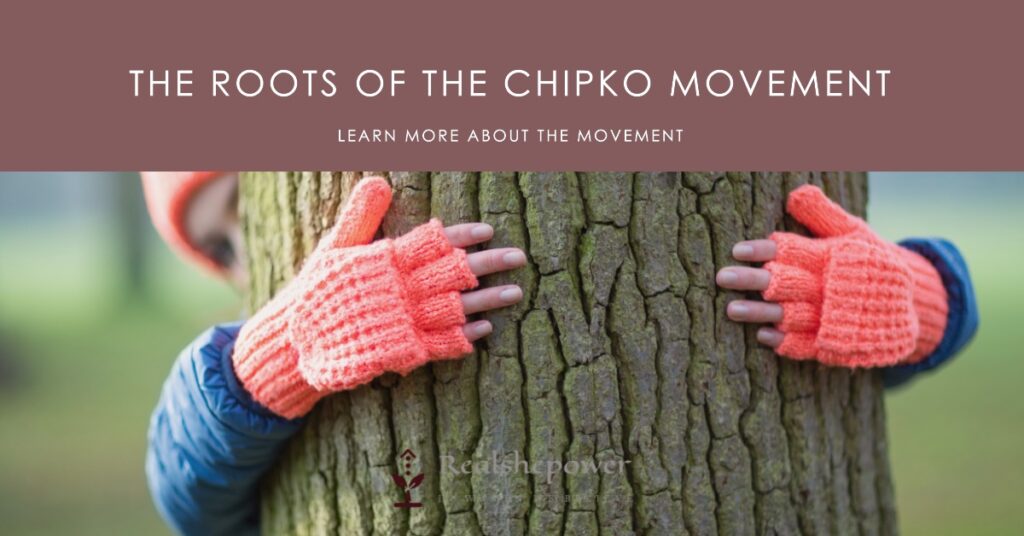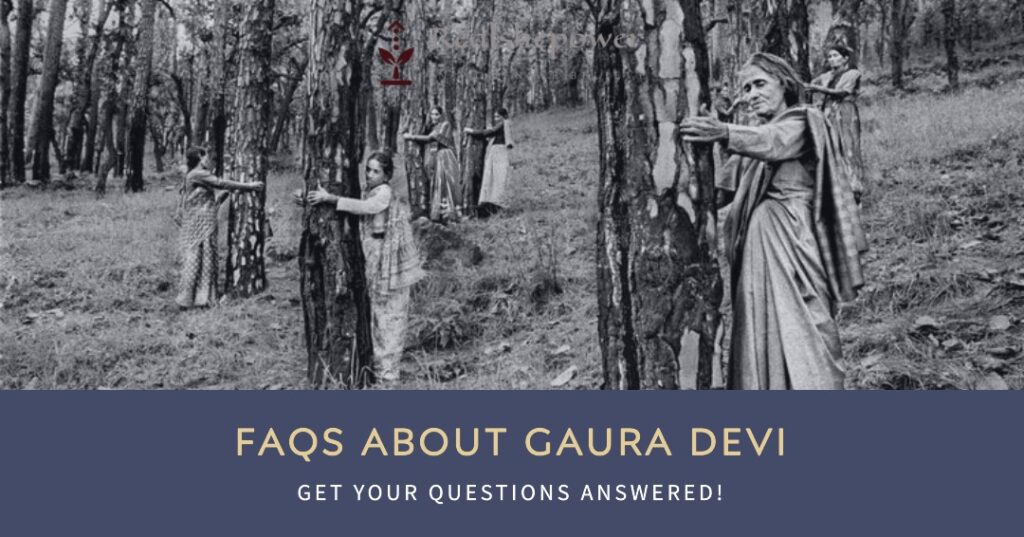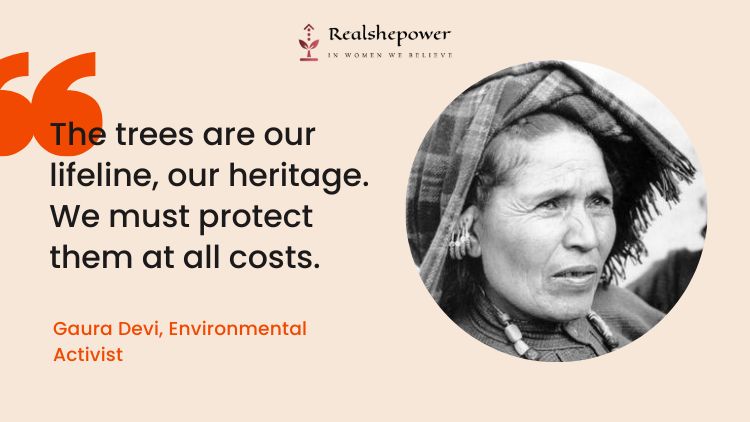Gaura Devi’s Inspiring Journey: The Woman Who Hugged Trees


In the annals of history, there are individuals whose remarkable deeds shape the course of movements and inspire generations. One such unsung hero is Gaura Devi, an environmental activist whose heroic act became the defining moment of the Chipko Movement. Born and raised in a remote village nestled in the Himalayan foothills, Gaura Devi’s story is a testament to the power of ordinary people to bring about extraordinary change.
Table of Contents
The Roots of the Chipko Movement

Before we dive into Gaura Devi’s inspiring journey, let’s first understand the roots of the Chipko Movement. The movement, which originated in the 1970s in the Indian state of Uttarakhand, was a grassroots effort to protect the region’s forests from rampant deforestation. The term “Chipko” translates to “hug” or “embrace” in Hindi, symbolizing the villagers’ commitment to hugging the trees and preventing them from being felled.
The Chipko Movement was a response to the indiscriminate logging practices that were destroying the rich biodiversity of the Himalayan forests. These forests provided not only a source of livelihood for the local communities but also played a crucial role in maintaining ecological balance and preventing soil erosion.
Who was Gaura Devi?
Gaura Devi was a courageous woman and a prominent figure in the Chipko Movement. She hailed from the village of Reni in the Chamoli district of Uttarakhand, India. Gaura Devi became a symbol of resistance and strength when she led a group of women in 1973 to protect the trees in their sacred grove from being felled by loggers. Her act of hugging the trees and refusing to let them be cut down became an iconic moment in the history of the Chipko Movement.
Gaura Devi’s bravery and determination inspired countless others to join the cause and sparked a wave of environmental activism across the nation. Her legacy as an environmentalist and a champion for the protection of forests continues to inspire people to this day.
Gaura Devi’s Awakening
Gaura Devi, a simple village woman, lived in the small hamlet of Reni in Uttarakhand. Like many others in her community, she depended on the forests for her livelihood, which provided sustenance and resources for their daily needs. However, the increasing commercial exploitation of the forests posed a grave threat to their way of life.
It was a fateful day in 1973 when Gaura Devi’s life took a momentous turn. Forest contractors arrived in Reni with the intention of felling the trees that had been an integral part of the villagers’ existence for centuries. The news spread like wildfire, igniting a spark within Gaura Devi and her fellow villagers.
The sight of the contractors armed with axes and saws sent shockwaves through the community. They realized that if they didn’t take action, their forests would be lost forever, along with their livelihoods and the ecological balance of the region. Gaura Devi, a woman known for her fierce determination and love for her land, could not stand idly by and watch this destruction unfold.
The Heroic Stand
As the contractors arrived with their axes and saws, Gaura Devi and the women of Reni knew they had to take action. They gathered together, forming a formidable human wall around the trees, refusing to let the loggers proceed. The men of the village, though initially hesitant, soon joined them, standing shoulder to shoulder in defense of their beloved forests.
In that moment, Gaura Devi became the embodiment of courage and resilience. With her heart pounding and adrenaline coursing through her veins, she led the charge to protect their ancestral lands. The women, who were often overlooked and underestimated, demonstrated incredible strength as they stood united, their arms wrapped around the trees, defying anyone who threatened their existence.
The sight of the villagers standing united, their arms wrapped around the trees, was a powerful symbol of resistance. Gaura Devi’s act of defiance captured the attention of the nation and beyond, sparking a wave of environmental consciousness. The Chipko Movement had found its defining moment.
The Ripple Effect

Gaura Devi’s heroic act resonated far beyond the boundaries of her village. News of the villagers’ unwavering determination spread like wildfire, capturing the hearts and minds of people across the country. The Chipko Movement gained momentum, and countless communities took up the cause, embracing the trees and safeguarding their precious natural resources.
The movement quickly garnered national and international attention, with activists, environmentalists, and concerned citizens rallying behind the cause. The sheer power of ordinary people coming together to protect their forests sent a strong message to the government and the logging industry. It was a wake-up call that could not be ignored.
In the wake of the movement, the Indian government was compelled to acknowledge the environmental concerns and take action. The result was a ban on the felling of trees in the region for fifteen years and the establishment of a committee to review the forestry policies.
Gaura Devi’s Legacy
Gaura Devi’s unwavering commitment to the environment and her selfless act of defiance left an indelible mark on the Chipko Movement. Her courage and determination inspired countless individuals to stand up for the protection of nature and the rights of local communities.
The impact of the Chipko Movement reached far and wide, not only in India but also on the global stage. It became a symbol of resistance against environmental destruction and laid the groundwork for future movements advocating for sustainable development and conservation.
Gaura Devi’s legacy serves as a reminder that change is possible, even in the face of seemingly insurmountable challenges. Her act of bravery showed that ordinary people have the power to make a difference and that grassroots movements can bring about systemic change.
In the years following the Chipko Movement, Gaura Devi continued to be an advocate for environmental conservation and sustainable development. She traveled across the country, sharing her story and inspiring others to take action. Her voice, once unheard, became a powerful force in the fight against deforestation and environmental degradation.
FAQs About Gaura Devi

Q: What does the term “Chipko” mean?
A: The term “Chipko” translates to “hug” or “embrace” in Hindi, symbolizing the villagers’ commitment to hugging the trees and preventing them from being felled.
Q: How did Gaura Devi’s act influence the Chipko Movement?
A: Gaura Devi’s act of defiance and her unwavering commitment to protecting the forests became the defining moment of the Chipko Movement. Her courageous stand inspired countless individuals to join the cause and brought national attention to the environmental concerns of the region.
Q: What were the outcomes of the Chipko Movement?
A: The Chipko Movement led to a ban on the felling of trees in the region for fifteen years and prompted the Indian government to establish a committee to review forestry policies. It also sparked a wave of environmental consciousness and inspired similar movements across the country and around the world.
Q: How has Gaura Devi’s legacy impacted the environmental movement?
A: Gaura Devi’s legacy serves as a shining example of the power of ordinary individuals to effect change. Her act of bravery inspired generations of activists and played a crucial role in raising awareness about the importance of environmental conservation and sustainable development.
7 Lesser Known Facts About Gaura Devi
While Gaura Devi’s contributions to the Chipko Movement are well-documented, here are some lesser-known facts about her:
- Gaura Devi’s real name was Gaura Pant. She was born on January 3, 1925, in a village called Lata in present-day Chamoli district of Uttarakhand, India.
- Gaura Devi’s involvement in the Chipko Movement began in 1974 when the government granted permission to a sports goods company to cut down trees in the Reni village of Chamoli district. This decision sparked the movement, and Gaura Devi played a crucial role in mobilizing women from her village to resist the deforestation.
- The Chipko Movement is often associated with hugging trees, but Gaura Devi’s approach was slightly different. When the loggers arrived in Reni village, she and other women formed a human chain around the trees, making it difficult for the loggers to cut them down.
- Gaura Devi’s act of defiance and the subsequent success of the Chipko Movement led to a 15-year ban on tree felling in the region. This decision not only protected the forests but also brought international attention to the importance of environmental conservation.
- Gaura Devi was honored with the prestigious Padma Shri award, one of the highest civilian awards in India, in 1982 for her contributions to the Chipko Movement.
- After her involvement in the Chipko Movement, Gaura Devi continued to work for the upliftment of women and the conservation of natural resources. She focused on promoting sustainable agriculture practices and empowering local communities.
- Gaura Devi passed away on June 29, 1991, but her legacy as a pioneering environmentalist and social activist lives on. Her efforts played a significant role in inspiring similar movements around the world and raising awareness about the importance of preserving nature.
While Gaura Devi’s contributions may not be widely known outside of India, her actions and the Chipko Movement have left a lasting impact on the global environmental movement.
In the Footsteps of Heroes

Gaura Devi’s story reminds us that ordinary individuals have the power to make an extraordinary impact. Her unwavering determination and courageous act defined the Chipko Movement and left a lasting legacy for future generations. Today, as we face unprecedented environmental challenges, Gaura Devi’s spirit serves as a guiding light, inspiring us to stand up for what we believe in and protect our planet for the betterment of all.
In the words of Gaura Devi herself, “The trees are our lifeline, our heritage. We must protect them at all costs.”
As we celebrate the unsung hero, Gaura Devi, let us also acknowledge the countless individuals who continue to fight for environmental justice and the preservation of our planet. It is through their collective efforts that we can hope to create a sustainable and harmonious future for ourselves and generations to come.
The Chipko Movement: A Revolutionary Environmental Crusade

When we think of revolutions, our minds often wander to political uprisings or social transformations. However, tucked away in the serene valleys of the Himalayas, a different kind of revolution took shape—one that championed the cause of Mother Nature herself. The Chipko Movement, with its unwavering determination and deep-rooted love for forests, became an inspiration for generations to come.
You can now write for RSP Magazine and be a part of the community. Share your stories and opinions with us here.
